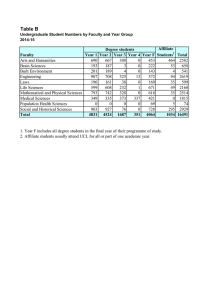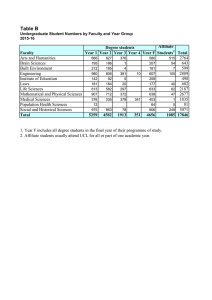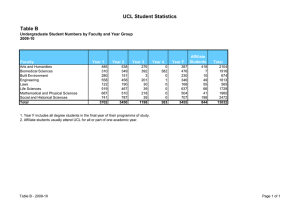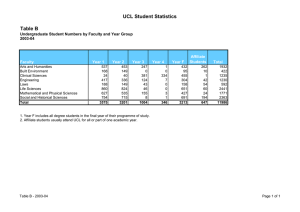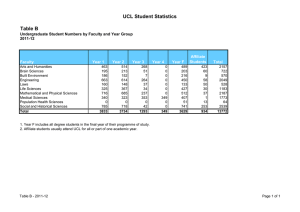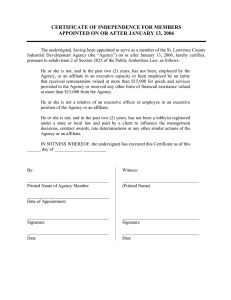Practitioner’s Perspective New Affi liate Marketing Regulations by Holly K. Towle, J.D.
advertisement
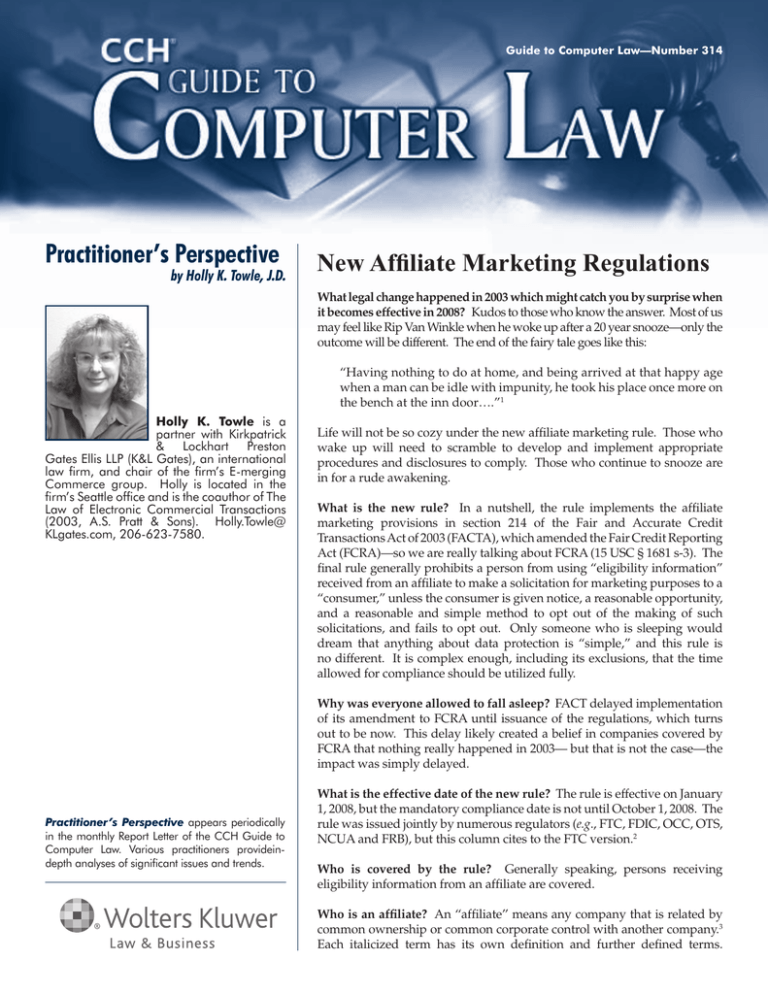
Guide to Computer Law—Number 314 Practitioner’s Perspective by Holly K. Towle, J.D. New Affiliate Marketing Regulations What legal change happened in 2003 which might catch you by surprise when it becomes effective in 2008? Kudos to those who know the answer. Most of us may feel like Rip Van Winkle when he woke up after a 20 year snooze—only the outcome will be different. The end of the fairy tale goes like this: “Having nothing to do at home, and being arrived at that happy age when a man can be idle with impunity, he took his place once more on the bench at the inn door….”1 Holly K. Towle is a partner with Kirkpatrick & Lockhart Preston Gates Ellis LLP (K&L Gates), an international law firm, and chair of the firm’s E-merging Commerce group. Holly is located in the firm’s Seattle office and is the coauthor of The Law of Electronic Commercial Transactions (2003, A.S. Pratt & Sons). Holly.Towle@ KLgates.com, 206-623-7580. Life will not be so cozy under the new affiliate marketing rule. Those who wake up will need to scramble to develop and implement appropriate procedures and disclosures to comply. Those who continue to snooze are in for a rude awakening. What is the new rule? In a nutshell, the rule implements the affiliate marketing provisions in section 214 of the Fair and Accurate Credit Transactions Act of 2003 (FACTA), which amended the Fair Credit Reporting Act (FCRA)—so we are really talking about FCRA (15 USC § 1681 s-3). The final rule generally prohibits a person from using “eligibility information” received from an affiliate to make a solicitation for marketing purposes to a “consumer,” unless the consumer is given notice, a reasonable opportunity, and a reasonable and simple method to opt out of the making of such solicitations, and fails to opt out. Only someone who is sleeping would dream that anything about data protection is “simple,” and this rule is no different. It is complex enough, including its exclusions, that the time allowed for compliance should be utilized fully. Why was everyone allowed to fall asleep? FACT delayed implementation of its amendment to FCRA until issuance of the regulations, which turns out to be now. This delay likely created a belief in companies covered by FCRA that nothing really happened in 2003— but that is not the case—the impact was simply delayed. Practitioner’s Perspective appears periodically in the monthly Report Letter of the CCH Guide to Computer Law. Various practitioners provideindepth analyses of significant issues and trends. What is the effective date of the new rule? The rule is effective on January 1, 2008, but the mandatory compliance date is not until October 1, 2008. The rule was issued jointly by numerous regulators (e.g., FTC, FDIC, OCC, OTS, NCUA and FRB), but this column cites to the FTC version.2 Who is covered by the rule? Generally speaking, persons receiving eligibility information from an affiliate are covered. Who is an affiliate? An ‘‘affiliate’’ means any company that is related by common ownership or common corporate control with another company.3 Each italicized term has its own definition and further defined terms. CCH GUIDE TO COMPUTER LAW Which affiliates must give the required opt-out notice? The notice “must be provided” by one of two persons: (i) an affiliate that has or previously has had a pre-existing business relationship with the consumer; or (ii) from two or more members of an affiliated group of companies as part of a joint notice, provided that at least one of the affiliates has or previously has had a pre-existing business relationship with the consumer.4 This caused consternation among those who pointed out that it’s a bit odd to require an affiliate who no longer has a relationship with a consumer to provide notice, and that the provision of providing notice might expose that affiliate to liability. The regulators, however, believe that notice needs to come from a person the consumer might recognize; and they don’t believe the regulations impose any duty on affiliates who do not intend to use eligibility information. One can only hope. What is a “consumer report”? The provision of FACT that is the basis for these rules prohibits a person that receives from an affiliate, information that would be a “consumer report,” from using to make a marketing solicitation unless certain conditions are met such as providing an opt-out. So what is a “consumer report?” It is “any written, oral, or other communication of any information by a consumer reporting agency bearing on a consumer’s credit worthiness, credit standing, credit capacity, character, general reputation, personal characteristics, or mode of living which is used or expected to be used or collected in whole or in part for the purpose of serving as a factor in establishing the consumer’s eligibility for— (A) credit or insurance to be used primarily for personal, family, or household purposes; (B) employment purposes; or (C) other purposes authorized under [15 USC 1681b].”5 Don’t be mislead by the definition—landlord cooperatives who provide data to landlords on tenant eligibility can be “consumer reporting agencies,” as can processors or merchant associations providing data on whether to accept a check; and persons receiving such “reports” can be “users” of consumer reports. Background checks are a subset of “consumer reports” when based on personal interviews. NUMBER 314 of ‘‘consumer report’’ in section 603(d)(2)(A) of the Act did not apply. Eligibility information does not include aggregate or blind data that does not contain personal identifiers such as account numbers, names, or addresses.6 The cited § 603(d)(2)(A) of FCRA is a section excluding from the definition of “consumer report” this information: (2) Exclusions.— Except as provided in paragraph (3), the term “consumer report” does not include— (A) subject to section 1681s–3 [Section 624, i.e., the affiliate marketing section] of this title, any— report containing information solely as to transactions or experiences between the consumer and the person making the report; (ii) communication of that information among persons related by common ownership or affiliated by corporate control; or (iii) communication of other information among persons related by common ownership or affiliated by corporate control, if it is clearly and conspicuously disclosed to the consumer that the information may be communicated among such persons and the consumer is given the opportunity, before the time that the information is initially communicated, to direct that such information not be communicated among such persons;7 (i) Clear as mud? Well, it might be upon long study of the regulations. In the meantime, think of it this way: if you’re going to use information received from an affiliate for marketing purposes, don’t assume that, just because it came from an affiliate, it’s okay to use it. In essence, the new rules “take back” the affiliate exceptions in certain circumstances. What is “eligibility information”? ‘‘Eligibility information’’ is defined as: Who is a consumer? We are talking about the Fair Credit Reporting Act, which aberrantly defines consumer to mean “individual,” i.e., human beings. Thus, FCRA covers employees and that is why its rules regarding background checks pertain to employers acting for business purposes; in contrast, FCRA’s rules for when credit reports can be ordered on “consumers” seeking credit or insurance, confine its coverage to the more typical definition of consumer, i.e., those acting for personal, family, or household purposes. In short, FCRA is a mixed bag. So what about the affiliate marking regulations—do they cover individuals acting for business purposes or just individuals acting for traditional consumer purposes? The answer is not clear; but FCRA’s mixed bag should continue to be relevant. Also, there is an exclusion from the new rule for pre-existing business relationships which may sometimes moot the issue. any information the communication of which would be a consumer report if the exclusions from the definition Opting Out. Under the regulation, consumers must be given an initial notice that he or she may opt-out of the use of eligibility Notwithstanding the above, the regulations don’t use the term “consumer report.” They use the term “eligibility information” to capture a more elusive concept that is hard to describe. It goes like this: FCRA defines consumer report as a large circle, but then carves out of that circle items that really would otherwise be in the circle, but are excluded if shared among affiliates. Some items can be shared without notice to individuals but some cannot—those sharing rules apply regardless of and in addition to these marketing rules. To capture what is really at issue in the marketing rules, the regulators coined a new term, “eligibility information.” CCH GUIDE TO COMPUTER LAW information for marketing solicitations and must have failed to opt out. An opt-out is effective for at least five years, unless the consumer revokes it. Once that period expires, the information still may not be used to make any solicitation for marketing purposes unless the consumer receives a renewal notice and an opportunity (using a simple method) to renew the opt-out for another period of at least five years. The required initial notice must allow the consumer the opportunity to prohibit all solicitations or to choose from different options—including options about the types of entities and information covered, and which methods of delivering solicitations the consumer elects to prohibit. However, one of the alternatives must allow the consumer to prohibit all solicitations from all covered affiliates. The initial notice must be clear, conspicuous, and concise, and any opt-out method must be “simple,” all per regulations. The definition of “clear and conspicuous” is not the definition commonly used and the notice rules are anything but simple. The regulation does, however, contain model notices that will create a “safe harbor” if used. Hence the need to start thinking about compliance now. To illustrate the kind of detail that is involved with these regulations, go back to the statement that the consumer must have “failed” to opt-out after having been given the notice. If you think that just means that the consumer failed to “deselect” a box pre-marked for opt-in, you would be wrong— failing to de-select will not be consent under these rules. If you think that it means the consumer failed to respond within a week to an emailed notice, you would be wrong, absent special circumstances. If you think you may post notice on a website without requiring the consumer to acknowledge receipt of that notice, you would be wrong. In short, these regulations are not only detailed, they are contrary to many common practices. Hence the point about rude awakenings for those who snooze too long. 8 NUMBER 314 affiliate; (2) uses it to do one or more stated things; and (3) as a result of that use, the consumer is provided a solicitation. The stated things are: (a) identifying the consumer or type of consumer to receive a solicitation; (b) establishing criteria used to select the consumer to receive a solicitation; or (c) deciding which of the person’s products or services to market to the consumer or tailoring that person’s solicitation to that consumer. Details abound, e.g., a person is deemed to “receive” information when an affiliate places it into a common database, and receipt by service providers can also count. What exclusions might apply? The statute says that it does not apply to a person: (A) using information to make a solicitation for marketing purposes to a consumer with whom the person has a pre-existing business relationship; (B) using information to facilitate communications to an individual for whose benefit the person provides employee benefit or other services pursuant to a contract with an employer related to and arising out of the current employment relationship or status of the individual as a participant or beneficiary of an employee benefit plan; (C) using information to perform services on behalf of another person related by common ownership or affiliated by corporate control, except that this subparagraph shall not be construed as permitting a person to send solicitations on behalf of another person, if such other person would not be permitted to send the solicitation on its own behalf as a result of the election of the consumer to prohibit solicitations under paragraph (1)(B); (D) using information in response to a communication [about your product and services] initiated by the consumer; What is a “solicitation?” There is a variance between the statute and the regulation that may prove important; but for general purposes, the regulation defines “solicitation” as “the marketing of a product or service initiated by a person to a particular consumer that is— (i) Based on eligibility information communicated to that person by its affiliate as described in this part; and (ii) Intended to encourage the consumer to purchase.” Solicitations do not include communications that are directed at the general public. The regulation provides examples of what is a solicitation, including “a telemarketing call, direct mail, e-mail, or other form of marketing communication directed to a particular consumer that is based on eligibility information received from an affiliate.” Again, this is not a simple rule because the regulators believe that even a public campaign can be a solicitation if it is based in part on eligibility information directed to a particular consumer. The regulations generally parallel the statute except that references to “persons” in subsection (C) are replaced with references to affiliates and the bracketed text is added in subsection (D). It means that if the consumer calls about locations and hours, that is not within the exclusion as stated in the regulations; if the consumer had said he was interested in certain products, then it would be within the exclusion. A person is viewed as “making” a solicitation if the person does three things: (1) receives eligibility information from an The detail regarding these exclusions is significant and already Rip would be sleeping given the length of this column. So (E) using information in response to solicitations authorized or requested by the consumer; or (F) if compliance with this section by that person would prevent compliance by that person with any provision of State insurance laws pertaining to unfair discrimination in any State in which the person is lawfully doing business.9 CCH GUIDE TO COMPUTER LAW I will end where I began, with the fairy tale. Washington Irving says this at the end: NUMBER 314 2 3 4 The story of Rip Van Winkle may seem incredible to many, but nevertheless I give it my full belief…. Indeed, I have heard many stranger stories than this, in the villages along the Hudson; all of which were too well authenticated to admit of a doubt.... The story, therefore, is beyond the possibility of doubt. 5 6 So it is with the new affiliate marketing regulation: it is real and belief is advisable. 7 8 Endnotes 1 Full tale available at http://www.ongoing-tales.com/ SERIALS/oldtime/FAIRYTALES/ripvanwinkle.html. 9 See 16 CFR Part 680. See 16 CFR § 680.3(b). See 16 CFR § 680.21(a)(3). See 15 USC §1681a(d)(1). See also Nimmer and Towle, The Law of Electronic Commercial Transactions (2003-07, A.S. Pratt & Sons) at Chapter 11.06[11] for a discussion of surprising aspects of FCRA such as who can, unwittingly, become a consumer reporting agency. 16 CFR § 680.3(h). 15 USC §1681a(d)(2)(A). For a much more detailed discussion, see Nimmer and Towle, The Law of Electronic Commercial Transactions (2003-07, A.S. Pratt & Sons) at Chapter 12.18[1] (upon next update for Chapter 12). FACT § 214, adding FCRA § 624(a)(4).
